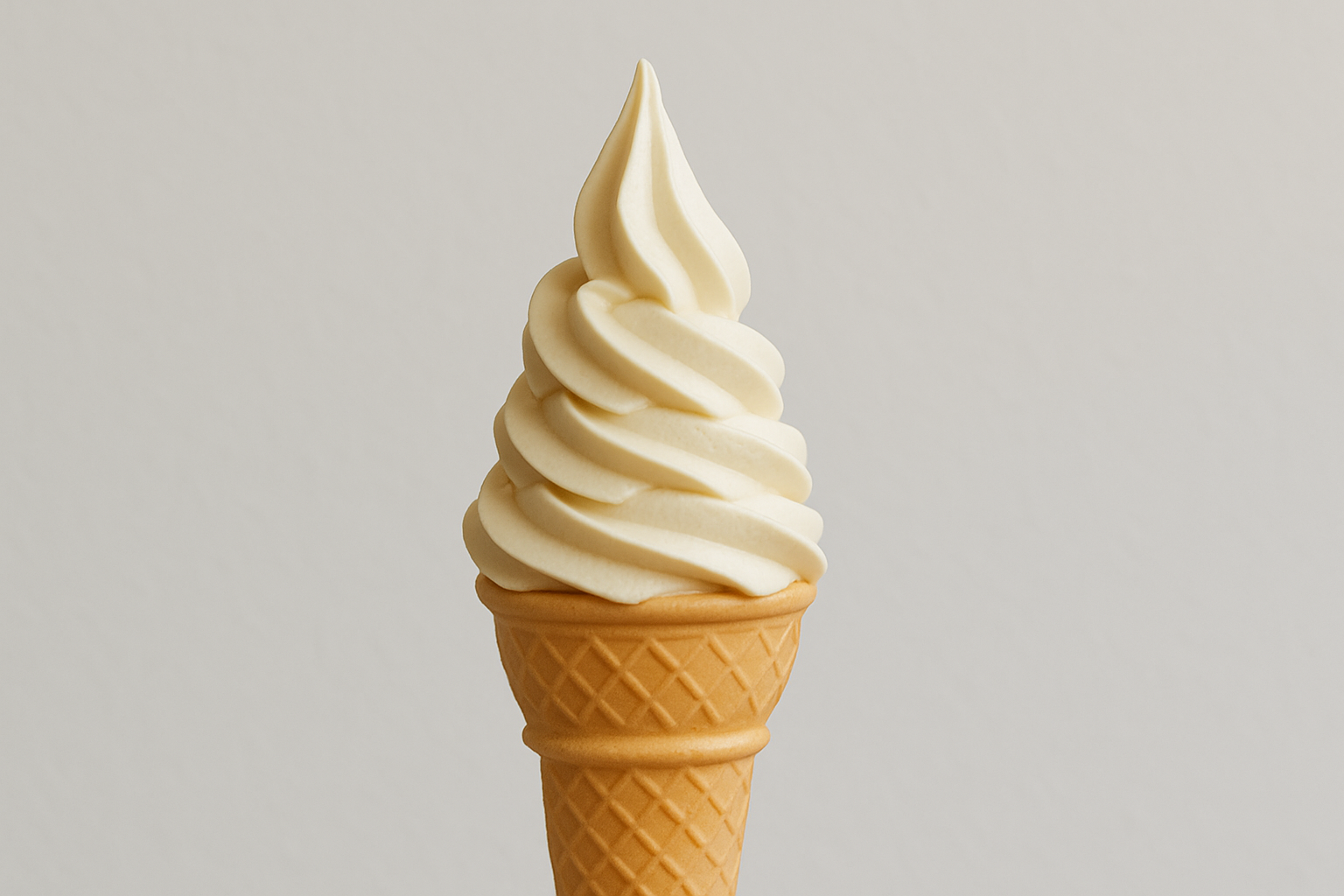Soft Serve Machines Explained: Gravity, Pump & Heat-Treat
Behind every perfect swirl is a piece of engineering. Soft serve machines are the backbone of the business, and understanding their differences helps operators make smart, long-term choices. Here’s a breakdown of the main types and what to consider when investing in one.
Gravity-Fed Machines
Gravity-fed machines rely on simple mechanics: mix flows from the hopper into the freezing cylinder by gravity. They are easy to use, require less maintenance, and are generally more affordable. However, they produce lower overrun (30–40%), which means denser, richer product but lower yield per liter of mix.
- Pros: simple, cost-effective, fewer parts to clean.
- Cons: less consistent overrun, lower volume output.
Pump-Fed Machines
Pump-fed (pressurized) machines use a pump to push mix and air into the freezing barrel. This allows for higher and more consistent overrun (50–65%), producing a lighter texture and more yield per liter. Pump machines are favored by high-volume shops that want tall, visually appealing swirls and efficient output.
- Pros: higher yield, consistent texture, faster recovery during rush hours.
- Cons: more expensive, more complex cleaning and maintenance.
Single, Twin & Twist Machines
Machines come in different configurations:
- Single-barrel: one flavor, compact and simple.
- Twin-barrel: two flavors served separately.
- Twist option: combines two flavors into one iconic swirl.
Cooling Systems: Air vs. Water
Soft serve machines generate heat that must be managed. Air-cooled units vent hot air into the room, making them easy to install but unsuitable for tight or hot kitchens. Water-cooled units use water to remove heat, offering better efficiency and performance in high-demand settings, but requiring proper plumbing.
Heat-Treatment Machines
One of the biggest innovations in soft serve is heat-treatment technology. These machines automatically pasteurize the mix at night by heating it to safe temperatures, then cooling it back down. This process extends cleaning intervals (often up to 14 days), saving time and reducing waste.
Note: Regulations vary by country, so always follow local hygiene laws and the manufacturer’s instructions.
Choosing the Right Machine
The “best” machine depends on your operation:
- Small café or kiosk: compact gravity-fed unit.
- Busy shop or franchise: pump-fed, twin-barrel with twist option.
- High hygiene standards: heat-treatment model with certified cleaning cycles.
Final Thoughts
Investing in the right soft serve machine is not just about cost—it’s about matching capacity, quality, and ease of use with your concept. A well-chosen machine can mean smoother operations, happier customers, and higher profits.
Want to Learn More?
This article is part of our Soft Serve Guide. Next, explore:
Contact Us
We don’t just sell machines—we operate them daily in high-traffic tourist locations. Contact Softeis Investition | Der Süße Stopp for practical, experience-based advice on choosing the right model.
